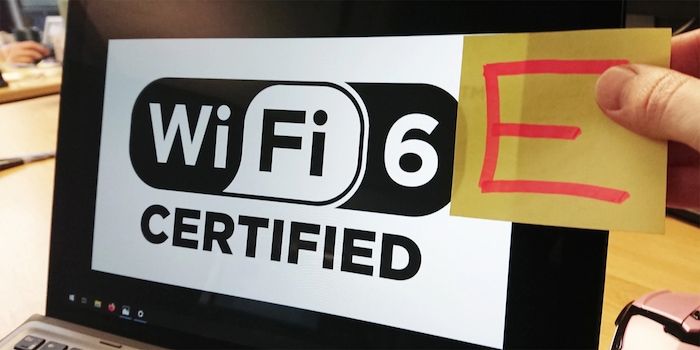
6 GHz Wi-Fi: the higher frequency band is ready to go
17 years ago, Wi-Fi was expanded to the 5 GHz frequency band. Since then, a lot has happened in terms of technology; however, not when it comes to the GHz spectrums used. That might change now. «Wi-Fi 6E» is all set to use the 6 GHz frequency band.
The US Federal Communications Commission first proposed expansion of Wi-Fi into the 6GHz spectrum in October 2018. Less than a year and a half later, the authorities gave the go-ahead for this endeavour in the US. An additional spectrum with 1,200 MHz will offer 7 or 14 new non-overlapping channels. When and whether the new standard «Wi-Fi 6E» is coming to Europe is still unclear.
What's Wi-Fi 6E good for?
Wi-Fi 6E will run on the existing Wi-Fi 6 protocol (802.11ax). The new frequency band is located right next to the 5 GHz spectrum, which has been in use since Wi-Fi 4 (802.11n). The additional 1,200 MHz are intended to transmit between 5.925 GHz and 7.125 GHz and provide up to seven additional channels using a width of 160 MHz. With a channel width of 80 MHz, there will even be an additional 14 channels available.
The channel expansion means that more devices within close proximity of each other will be able to use Wi-Fi. This should also benefit technologies such as mesh Wi-Fi, as the relatively few channels available to date mean that latency can suffer when different Wi-Fi devices overlap. In short: Wi-Fi 6E will reduce network congestion.
What does this mean for Europe?
It’s doubtful that the full additional 1,200 MHz spectrum will be available in our part of the world. European authorities might only approve a part of the band. It also remains to be seen if current Wi-Fi 6 router hardware can use the new spectrum by means of an update. From a technical point of view, the hardware should be able to manage – the antenna designed for 5 GHz should work for 6 GHz.
I find my muse in everything. When I don’t, I draw inspiration from daydreaming. After all, if you dream, you don’t sleep through life.
From the latest iPhone to the return of 80s fashion. The editorial team will help you make sense of it all.
Show all